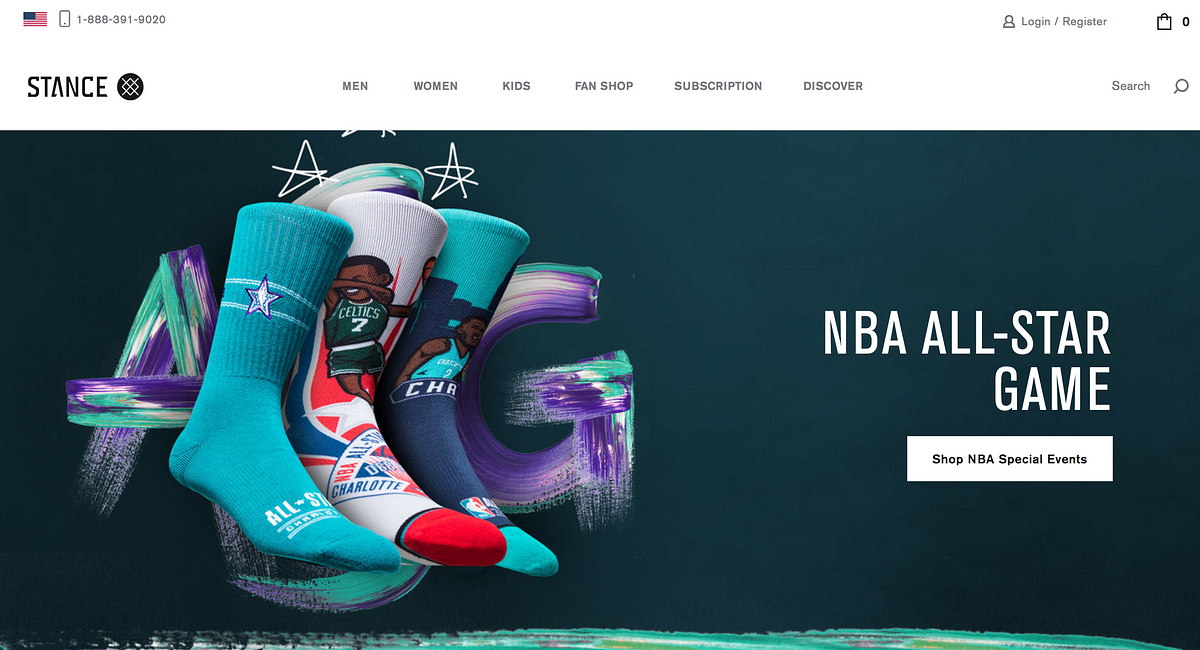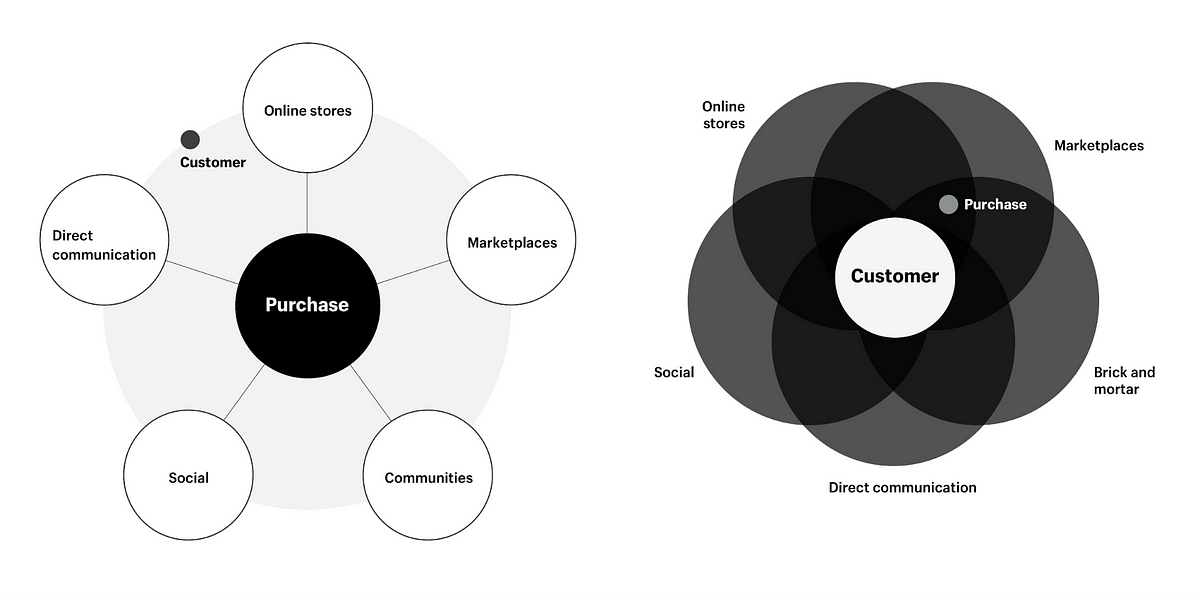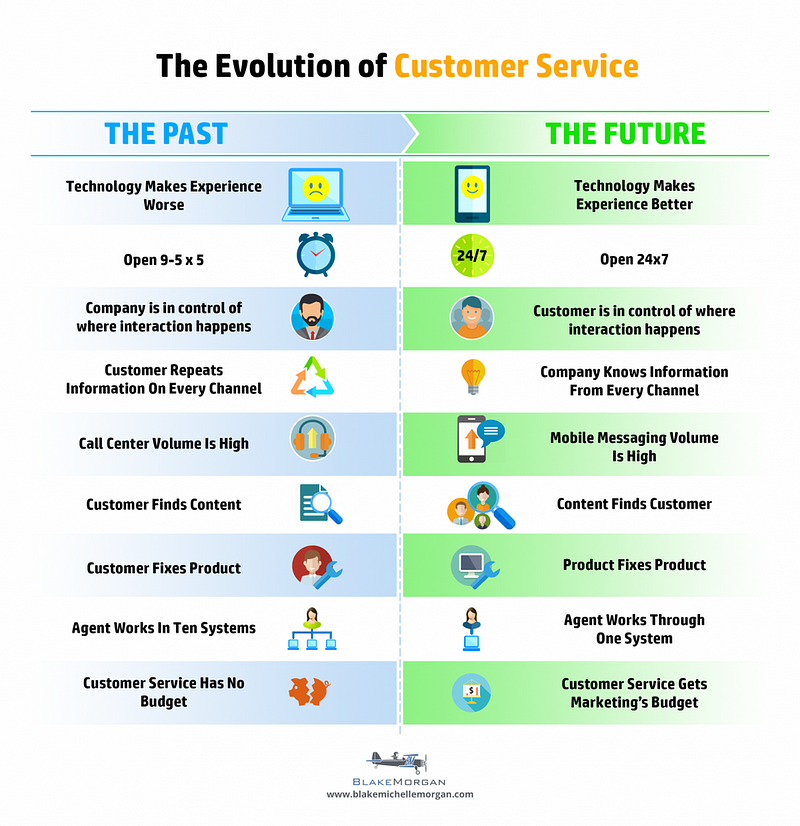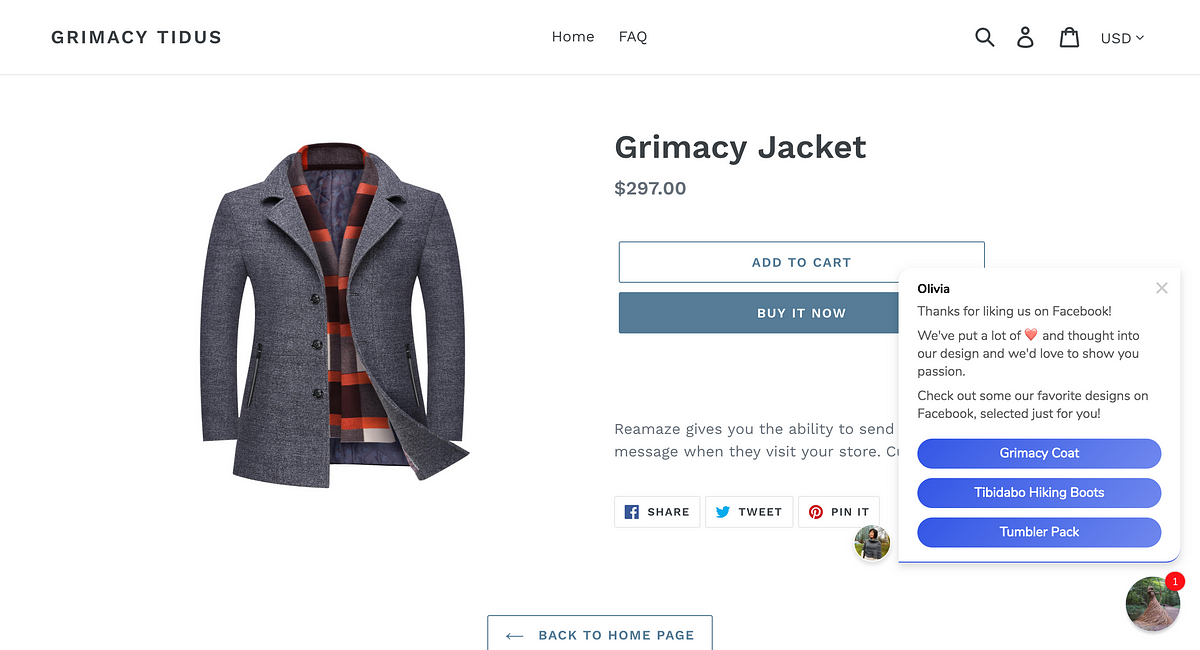Last Updated on September 1, 2023 by David

If someone were to ask you to name the first eCommerce company that existed, what name comes to mind? Probably eBay or Amazon? And you’d be right. 1995 is often touted as the defining year for modern eCommerce. Both Amazon and eBay launched publicly in 1995 and, unsurprisingly, both are household names today.
Over the past two decades, evolutions in hardware, software, and the internet in general have seen major milestones contributing to fundamental shifts in consumer behavior. PayPal forever changed the way people pay online in 1998. Apple changed the digital purchasing experience and the music industry as a whole with iTunes in 2003. The shift to mobile experiences started with the iPhone in 2007. Facebook unveiled their ads business in 2007. Businesses start to adopt messaging and chatbot technology in as early as 2011. The list goes on.
 Image Credit: Google
Image Credit: GoogleWith each major shift in technology, eCommerce was there to reap the benefits, allowing global sales from online shopping to grow from $25 billion in 2000 to over $1 trillion in 2012, $2.3 trillion in 2017, and is projected to grow to $4.88 trillion by 2021. (Statista)
As large as the pie is and will become, the growth of eCommerce will still, undoubtedly, produce its share of winners and losers. Just last year, the Harvard Business Review claimed that “No industry is failing faster than retail”. Despite these types of overly generalized claims, data seems to show that retail is doing just fine. It’s simply the landscape that is changing.
What’s at Stake?
If you Google “the future of eCommerce”, expect to find about 2,000 articles claiming to know what the promised land looks like. The simple fact of the matter is that “the future of eCommerce” is not a binary alternative between shopping brick-and-mortar or shopping online. One thing is for sure though; brands (both retail and eCommerce) fall flat if they fail to understand that modern shopping is not purely about the transaction.
In contrast, the core concept that thriving, modern brands understand is “choice”. DNVBs (or Digitally Native Vertical Brands) have embraced this fundamental shift in the landscaped because a) they were born in the always-online, mobile-first, and connected commerce age and b) they understand that experiences matter more than price, placement (location), and price.
“The brands that are winning are the ones that understand and own the fundamental interplay between experiential and transactional. It’ll always depend on how you navigate the interplay between offline and online worlds, how you — the brand — interlock customers and products” — Fab Dolan, Head of Marketing at Google Canada
Think back to the age of when software was sold on discs vs how cloud computing and SaaS (Software-as-a-Service) disrupted that landscape, the same parallels can be drawn for modern commerce. DNVBs like Purple with their infamous “egg test” commercials on YouTube, Stance with their online to offline influence in major league sports, and MVMT with their purpose driven stories that evoke the deepest emotions about watches, there’s no debate that the DTC (Direct-to-Consumer) model is leading the way in defining the modern customer experience.
 Image Credit: MVMT
Image Credit: MVMTBy owning and growing their brand equity and purpose, these vertical brands are also owning and growing their customer relationships, and therefore augmenting the entire shopping experience for products that can cost just $20 dollars (Stance socks) to earmarked products that can cost thousands of dollars (Purple mattresses).
 Image Credit: Stance
Image Credit: StanceDigitally Native Experiences
If there’s one experience that DNVBs has mastered over the years, it’s their ability to connect with consumers. One of the hypothetical byproducts of choice is that customers can be anywhere. But this is also one of the biggest misconceptions about modern commerce. Customers are not everywhere. They exist in a spectrum of the brand’s ability to reach customers.
 Image Credit: Shopify.com
Image Credit: Shopify.comThe image above represents two typical schools of thought around shaping the marketing and sales funnel. A multi-channel approach (left) leaves brands with too much focus and not enough control. An omni-channel approach (right) leaves brands with too much control and not enough focus. Without a holistic, experience-first mindset, brands end up relying purely on technology to deliver bits and pieces of an “experience” that does not exemplify enough value in the customer journey. Remind yourself of some recent eCommerce experiences:
- You read a piece of great content by a particular brand but what tangible actions did that result in?
- You were browsing Facebook and ran across a great ad for a product you’re interested in but how did that ad help you make a purchase?
- You were on a digital storefront and browsed around for perhaps hours contemplating whether or not to purchase but how did that brand help you understand the value?
- You ran across that same product on an Instagram story (probably retargeting) but how did that help you make a decision?
Ever since the dawn of eCommerce, the question has always been “how do we close the browser-to-buyer divide?” With all the tech out there for increasing brand awareness through written/audio/visual content, retargeting, AR/VR shopping, ads, advanced checkout tactics such as in-cart up-sells and loyalty rewards, etc, how do you connect all the dots?
The Unifying Experience is Conversational
An important skill young brands need to learn is how to decouple social commerce from conversational commerce. For the past decade or so, establishing a presence on social networks like Facebook, Instagram, Pinterest, Twitter, and other publicly accessible platform was enough to claim you cared about the “customer experience” because you are publicly available for conversations. And being able to connect a social post to a checkout used to be enough to say your brand is an expert on social commerce. Direct social commerce is at best a hypothesis and certainly does not qualify alone as conversational commerce.
Another important skill young brands need to learn is how to couple customer service with customer experience. Lots of online brands fail because they see customer service as a cost center. It’s simply something they “need” to do in order to get by and so customers don’t get pissed off. If they had a choice, they wouldn’t do it. Delivering good-enough customer service through live chat on mobile devices and your storefront is no longer enough to claim you handle customer conversations well. Customer service needs to define and connect the experience because it’s a revenue and opportunity goldmine. When you’re able to have better conversations with customers, you generate happier customers. And when you have happy customers, you make more sales.
If that was too much to unravel, understand this: simply existing online through a variety of channels and marketing through them won’t cut it anymore. And simply offering great customer service also won’t cut it anymore.
So what makes commerce conversational?
Conversational Commerce is a relatively new concept, first coined by Uber’s Chris Messina in 2015. It describes the relationship between modern eCommerce brands’ ability to generate more sales using better customer experiences and messaging apps like Facebook Messenger, WhatsApp, and even Instagram. More recently, conversational commerce has evolved even more to include voice recognition technology like Amazon Alexa and NLP (Natural Language Processing) and AI technology used in chatbots.
The ultimate goal of conversational commerce is to meet the demands of the customer and allow them to purchase (with intelligent assistance) more easily through a variety of channels. These messaging apps and bots can also help answer questions, search through inventory, check order status, and augment human interactions with high degrees of efficiency.
The shift to conversational commerce is already here and destined for another evolution. Here’s why.
- Consumers are already more reliant on messaging apps for their daily communications (personal, business, commerce). In fact, instant messages sent through chat apps have already surpassed emails in 2016.
 Image Credit: BI Intelligence
Image Credit: BI Intelligence- Facebook Messenger, one of the most prolific chat apps for businesses is already adopted by countless brands across the industry to help make the purchasing experience more streamlined.
- NLP, machine learning, and AI technology is more advanced than ever before. With each passing year, these technologies are enabling brands to offer more customized experiences that meet the demands of the consumer.
- Outbound is the new inbound. Customer interactions with businesses no longer happen in a vacuum. Tools like chatbots and automated messaging based on behavioral detection allow businesses to turn static chat apps into engagement machines that offer personalized experiences that funnel window shoppers into active buyers.
- Consumers are already expecting personalized shopping experiences because consumer experiences have already been reconditioned by new technologies such as mobile checkouts, cardless payments such as Apple Pay, YouTube, Alexa, Google Home, and more.
- Customer service has already gone through many evolutions that enable conversational commerce to be much more of a reality than ever before. For example, customers no longer rely or trust email’s blackbox mentality. Instead, they expect online brands to take on the burden of making their shopping and support experiences better.
 Image Credit: BlakeMorgan Consulting
Image Credit: BlakeMorgan ConsultingGenerating More Valuable Experiences Using Conversational Commerce
Your messaging apps and chatbots need to define how customer relationships start, progress, end, and restart.
Online brands today exert countless dollars and resources on marketing tactics, paid content, and ad campaigns to boost traffic and awareness. Unfortunately, most window shoppers are lost quickly once they arrive on the brand’s website. There can be several factors contributing to this phenomenon. If we simply use the graphic above for reference, you’ll see clearly that gaps in customer service, not marketing effort, is the cause.
? Open 9–5 x 5
When customers can’t get their questions answered just because you’re not in the office, you lose sales. Period. This is a common problem for online brands. However, chat apps and chatbots, like Re:amaze, built around conversational commerce that work 24/7 can easily overcome this problem by engaging with website visitors to create personalized experiences that encourage inquisition, discovery, and brand awareness.
 Image Credit: Re:amaze Customer Messaging Platform
Image Credit: Re:amaze Customer Messaging Platform ? Company is in control of where interactions happen
Just so we’re not beating around the bush, customers are now in control of their expectations and ultimately where interactions should happen. The problem is the disconnect between your customers and your staff. High volumes inbound questions that are repetitive shouldn’t hinder your team’s ability to build relationships. Conversational commerce is as much about automation to make your team’s life easier as it is about making customers’ lives easier.
Conversational bots that work in tandem with humans to handle customer questions allow for better relationship building and enhancing the digital experience.
 Image Credit: Re:amaze Chatbot
Image Credit: Re:amaze Chatbot? Customer repeats information on every channel
Brands that do conversational commerce well understand the customer journey through every part of the sales funnel. Data driven chat apps and chatbots can help your team make more informed decisions, whether that means revealing their browsing patterns or seeing a prior interaction with a bot.
 Image Credit: Re:amaze Chatbot
Image Credit: Re:amaze Chatbot? Customer finds content
Content. So much content. There’s so much content that you’ve created just floating around the internet waiting to be found. Apps and tools designed for conversational commerce allows your content to find relevant customers.
 Image Credit: Re:amaze Customer Messaging Platform
Image Credit: Re:amaze Customer Messaging Platform? Customer service has no budget
Traditionally, companies employed chatbots in customer service roles. However, brands of today already use and democratize conversation bots by implementing them across multiple departments, including marketing, sales, and customer success. Sales will use conversation bots to qualify leads, as covered earlier. And marketers will use AI-powered conversation bots to increase personalization and engagement with potential and current customers.
How to Proceed
I always like to think of conversational commerce using this example:
https://twitter.com/kurtinc/status/1075421819472109568
Conversational commerce is a mindset composed of small wins in customer interactions for a brand. These interactions don’t always need to happen in the form of conversations but the communication of brand benefits and values should always be as personalized and as effortless as possible.
In an interview with Shopify, Kurt suspected that the latter coupon code worked “…because it’s personalized. Presenting someone with what appears to be a dynamically-generated unique coupon code signals to them that the experience is personalized and that the urgency is real.”
Adopting a conversation commerce mindset will allow your brand to interact with customers one-on-one automatically while you have their attention and in a scalable way. By using data, bots, and strategic placements of messages, you can provide customers with the personalized, friction-free experiences that they have come to expect.
When you can detect purchase intent based on a marketing campaign to start a conversation, build on a conversation, augment a conversation, or transition a conversation, you’re delivering a unique brand experience tailored for modern digital channels. This is something successful brands around the world are implementing to go up against uber-large-mega-corps and something you can do today to revolutionize your customer engagement and retention.
About Re:amaze
Re:amaze is a modern helpdesk and customer messaging platform designed to help eCommerce businesses boost customer happiness and revenue. Re:amaze allows all customer-oriented teams to work together in a shared inbox through email, social, SMS, voice, and live chat. Re:amaze also comes packaged with automated messaging and chatbots so eCommerce brands can succeed at the front lines of conversational commerce.
